By revisiting and refuting the cultural history of the West, this group is using time as its primary medium, looking backward to inform a different kind of gay future.
1. Habitations in History
Two women and their baby stare straight at us from the American past. Jessie Evans-Whinery, as she is identified in the caption, looks a lot like Elvis, with the tousled pompadour and watchful eyes of a rebel in repose. Her dowdier wife, Edith Evans-Whinery, leans toward her in affection and probably exhaustion; she’s clearly the homemaker in this homesteading family in Pie Town, N.M., circa 1940. It’s she who holds the dirty baby with the quizzical expression and a finger in his ear. Is he confused?
At any rate, I was. Were there lesbians living openly like this, I wondered, in hardscrabble rural outposts like Pie Town some 80 years ago? The photographs I was looking at certainly made it seem so, because the Evans-Whinerys are not the only female couple depicted. There are also Fae and Doris Caudill, with their two children, “eating dinner in their dugout,” as the caption tells us. Like Edith, Doris looks weary but fulfilled in her apron, passing the biscuits. And why not? Fae, despite that name, looks like the winner at a butch realness contest.
Elsewhere in the series, an unnamed couple — a female couple, once you zoom in — walks down the dirt road of Main Street together, a toddler alongside and a babe in arms. Likewise posing outdoors are the Norrises, sunbaked founders of the town: Jean in a cowboy hat, Virginia in straw with a modest ribbon. Their neighbor Ann Hesse looks like the Marlboro man’s sister. Nell Leathers shoots at hawks.
But it’s the “swing your partner square dance” that startled me into understanding. What look at first like boys — in flat-front pants and white shirts, their hands superior to their partners’ as they do-si-do — are upon closer inspection girls, their hair shaved close on the sides but otherwise possessed of soft chins and slight busts.
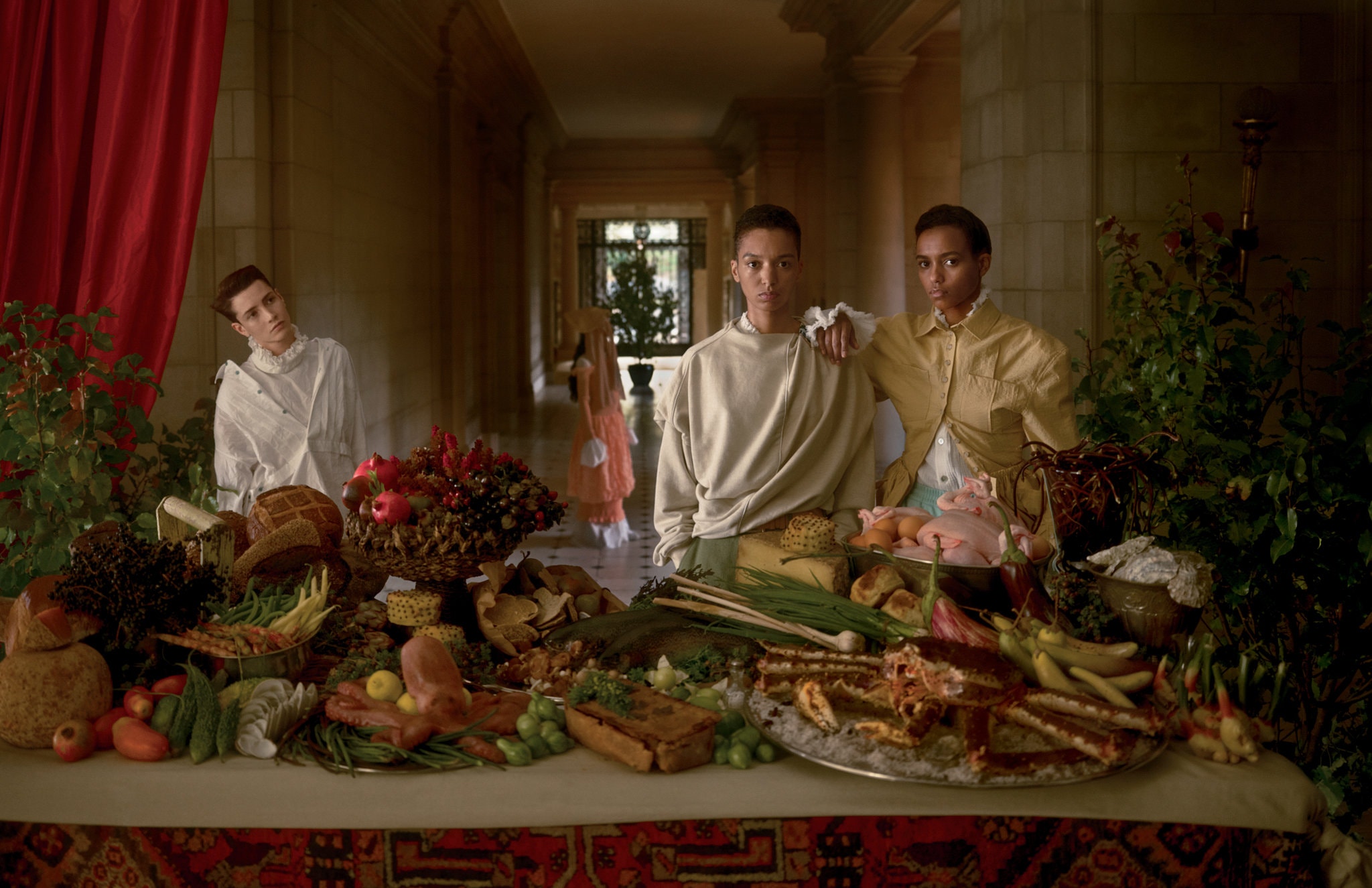
An original photograph commissioned by T that draws on themes of queer love and desire by subverting the style of a classical Renaissance painting. From left: Sies Marjan top, $1,295, siesmarjan.com, and stylist’s own collar and T-shirt. Loewe dress, $3,350, and hat, $1,950, loewe.com, and stylist’s own veil and shoes. Y/Project top, $475, shop.nordstrom.com, Gucci pants, $1,150, gucci.com, and stylist’s own collar. Jacquemus top, $718, jacquemus.com, Palomo shirt (worn underneath), about $340, palomospain.com, and Adidas pants, $65, adidas.com.Credit…Photo by James Hawkinson. Styled by Jay Massacret
Now you fully realize that, despite a few boy babies, there are no men in Pie Town. There are only women, living their lives, singly, in couples, in families, in community. What heaven, what haven, what mirage is this?
It’s Photoshop.
The original images, taken by the American photojournalist Russell Lee for the Farm Security Administration in 1940, depicted Pie Town as it actually was, its traditional gender roles and pairings strictly observed. According to Lee’s caption, Jessie and Edith Evans-Whinery were, in reality, just Jack Whinery and his unnamed wife. The Caudills weren’t Fae and Doris but Faro and his anonymous missus. Dozens of other photographs have been manipulated as well, pushing existing women closer together to suggest coupledom, or creating wives where husbands had been by removing Adam’s apples, lantern jaws and five-o’clock shadows.
“My Pie Town,” as the series of altered photographs is called, is the work of the American artist Debbie Grossman: an attempt, she has said, “to make the history I wish was real.” She describes the task as “an intimate act” at the pixel level — a phrase suggesting both the caressing of sculpture and the twiddling of sex: “Manipulating the touch of one woman’s hand on another’s shoulder is a way for me to access and merge my desire with figures which would have otherwise remained frozen in time.”
I, too, am frozen in time when I look at Grossman’s photographs, especially in conjunction with Lee’s. Together they suggest not an invented false history but a secret real one, as if the queerness had always been there, a kind of digital potential waiting to be released. Part of what freezes me is the calm beauty of the result; even Nell Leathers with her rifle is relaxed, her principal concern being chicken-stealing hawks. (There are no homophobes in Pie Town.) Another part is the simplicity of the intervention that produced such a disproportionately huge, and in some ways violent, result. For if “My Pie Town” is an act of repair, it also, at times, verges on vengeance, as each man is forcibly, digitally resexed. (In one case, a husband is erased entirely.) The women, too, are resexed in a way: That is, they are given their sex back. As lesbians, they somehow look so much happier, like they’re getting some on the regular.
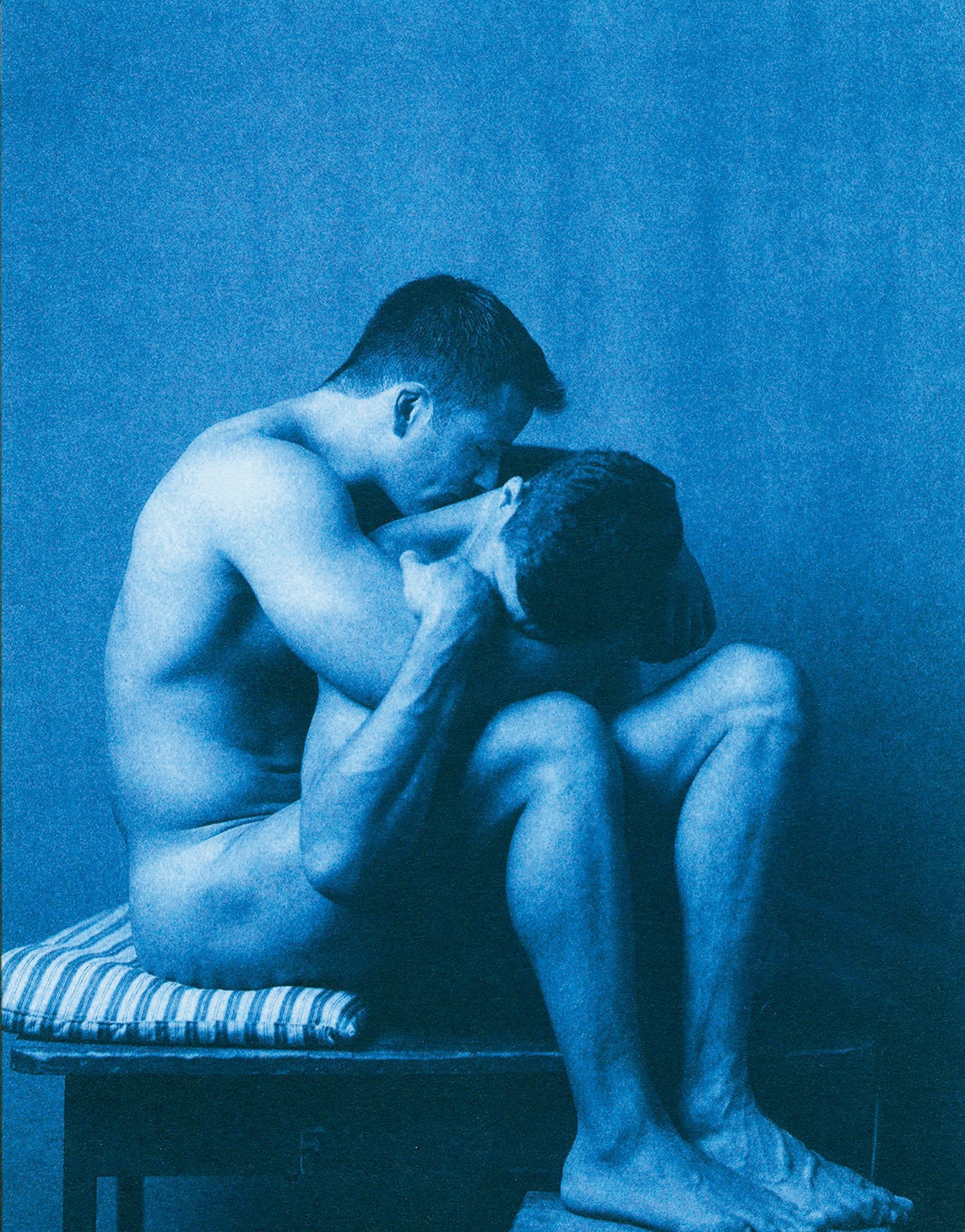
Accompanying this article are works by artists who are reimagining queer history — and art history, as well — by creating gay, lesbian and trans narratives that look backward, reinserting their lives and stories into the past. Some, like the artist Martine Gutierrez and the multidisciplinary duo McDermott & McGough, are exploring how previous eras might have looked and functioned had L.G.B.T.Q. people been more fully recognized, while others, like the photographers Catherine Opie and John Dugdale, are referencing bygone artistic codes and methods (for Opie, Dutch Golden Age portraiture; for Dugdale, 19th-century cyanotype processing, as shown here in 1999’s “I Could Not See to See”) to assert a visual legacy and a sense of dignity.Credit…John Dugdale, “I Could Not See to See,” 1999, Morton Street, N.Y.C., courtesy of the artist
The porousness of time in Grossman’s work — the way the year 2010, when she completed the series, infiltrates and ultimately reforms 1940 — in some ways mirrors that of all art, which is necessarily retrospective the moment it is made. But it is especially reflective of recent queer art, so much of which seems to start in the past, not just end up there. In fiction, drama, movies, painting and photography, gay men and lesbians, and others on the queer spectrum, have been building habitations in history, whether near or distant, sometimes in search of a more congenial domesticity and sometimes establishing more aggressive encampments.
What are they doing there? And why now? The canonical works of queer art — Radclyffe Hall’s novel “The Well of Loneliness” in 1928, for instance, or Larry Kramer’s “Faggots,” 50 years later — have most often been contemporary, set or styled in the artist’s own day. Not without plenty of exceptions, of course: Marguerite Yourcenar’s “Memoirs of Hadrian” takes place about 18 centuries before its 1951 publication; Virginia Woolf’s “Orlando: A Biography” (1928) imagines an Elizabethan poet who changes sex and sexual orientation as fast as a clown fish over the ensuing 300 years. And the painter Paul Cadmus, with his ancient egg tempera technique, might as well have been working in the early Renaissance instead of the 20th century, no matter that what he produced with his yolks and fine brush strokes was gay beefcake bordering on pornography. For that matter, the same could be said of Michelangelo.
But on the whole, queer art, which fully emerged from the closet in the 1960s and 1970s — around the same time people in great numbers did — has mostly concerned itself with its own moment, as if to say, “Here I am.” That approach continues because, after all, each new microgeneration of gay people born to straight parents in a straight world must create itself and its aesthetics from scratch. For better or worse, coming-out novels thus remain an evergreen genre, a kind of gay bar exam every queer writer takes. (I should know; I wrote one.) And each subsequent chapter in the emergence of gay art has announced itself as urgently new. Works about H.I.V. and AIDS in the 1980s and 1990s had the immediacy of reportage; from the 2000s onward, narratives about marriage and parenting, as well as the backlash against gay domesticity, have felt like real-time anthropology. If that line of contemporaneous comment has been petering out, at least as a phenomenon of privilege, it may be because there is nowhere left to take it.
Yet with works like “My Pie Town,” another approach has been emerging in tandem. You can see it in the British writer Sarah Waters’s novels; the French filmmaker Céline Sciamma’s new movie, “Portrait of a Lady on Fire”; the American playwright Matthew Lopez’s two-part drama, “The Inheritance” (which opened on Broadway last month); and in art by Glenn Ligon, Catherine Opie and McDermott & McGough, to name just a sample from various disciplines. The watchcry for these works isn’t so much “Here I am” as “There we were.” More trenchantly, they sometimes ask how the two ideas are, or aren’t, related. What is the queer past for?
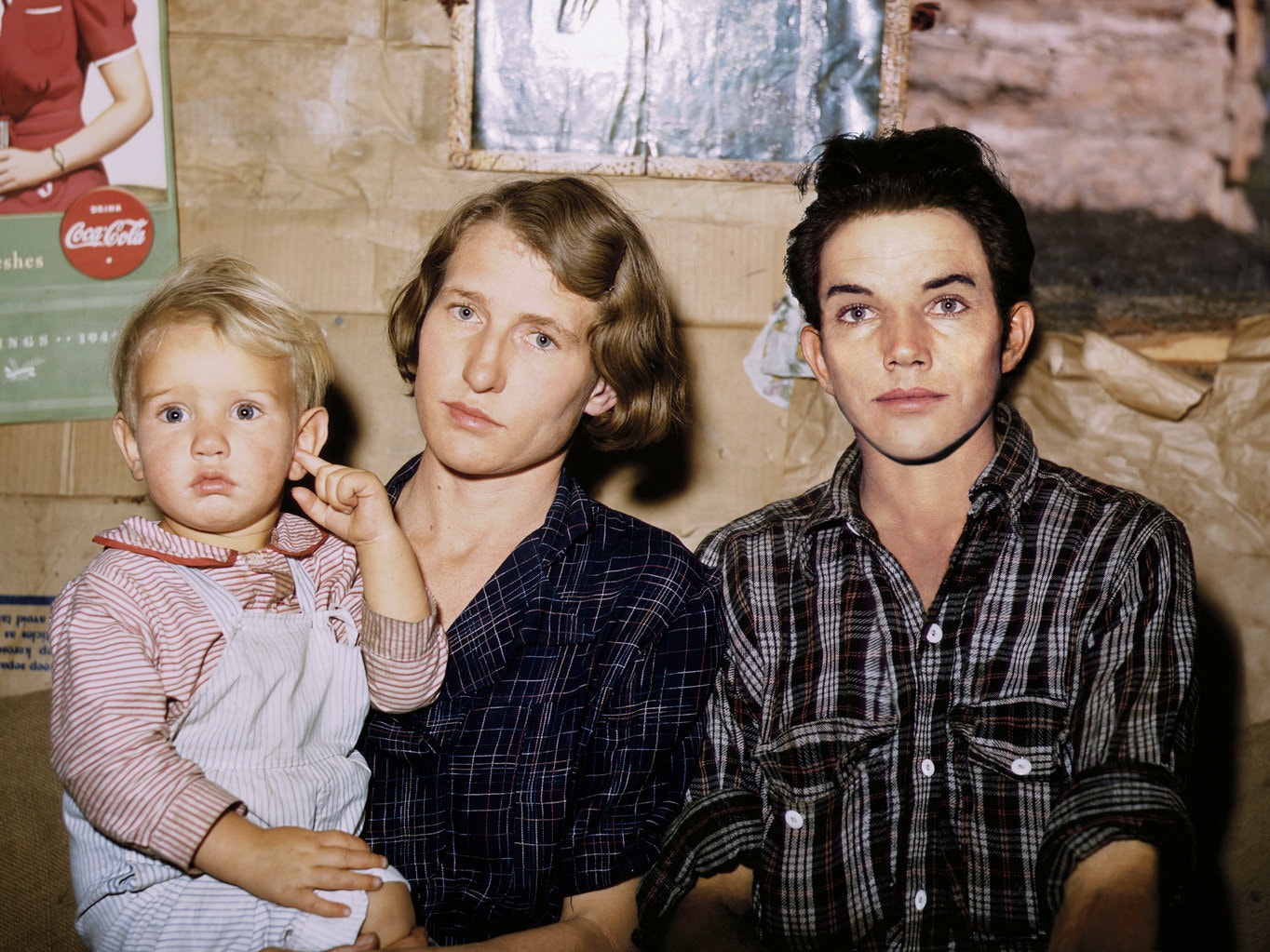
Debbie Grossman’s “Jessie Evans-Whinery, Homesteader, With Her Wife Edith Evans-Whinery and Their Baby” (2010), from her “My Pie Town” series.Credit…Inkjet print, the Metropolitan Museum of Art, purchase, Charina Foundation Inc., gift © Debbie Grossman, courtesy of Julie Saul Projects, N.Y.
2. “Publishable, but Worth It?”
A history lesson is one answer. Though we may think of young queers as knowledgeable and engaged, their knowledge is often ahistoric, their engagement thin. I am not so troubled by gay men in their 20s who look at me blankly if I mention Judy Garland; every demographic deserves its own diva. But few seem to know who Kramer is, either. And the idea that homosexuality began in 1969 is disturbingly, if understandably, prevalent among people born in the decades after. Some members of the cast of “The Inheritance,” Lopez’s six-and-a-half-hour doubleheader about the AIDS generation and its antecedents and successors, are so young that the Broadway production — after a world premiere in London last year — asked that battle-scarred survivor Edmund White to attend a rehearsal and answer questions as if to provide proof that the gay past exists.
White’s own books are mostly set in the present, or the perpetual present of autobiography; only now are they becoming history, some four decades after he began publishing them. But other queer artists head for history right from the start, as if deputized to repair a pothole there. It’s a large pothole: Lovers, heroes, victories and villains, not to mention the simple pleasure of enjoyable clichés, have all disappeared into it. To rescue them is to back-form the dignity that comes with having a long story to share and the art that goes with it. It’s no accident that the past-mining operation that has always existed as a subgenre of queer art is intensifying now, just as the history of other disenfranchised groups is finding wider audiences. (I’d estimate that I’ve seen more plays by black playwrights in the past two years than in the previous five.) But if the truth of some marginalized Americans is finally beginning to be dignified in museums and taught in schools, it’s a spotty revolution; gays and lesbians, let alone transgender people, still lack the cultural affirmation that gets you a chapter in the curriculum and a building on the National Mall. Queer artists have had to find workarounds, in part by expanding the idea that tradition is always something handed down like a gift from the powerful or, like an heirloom, from parent to child.
It’s also the case that in today’s so-called cancel culture, purely aesthetic gestures are suspect. Even wit must put on the drag of politics. Framing their goals in civic terms — the granting of full citizenship in a democracy of ideas — queer artists who might once have painted merely gorgeous portraits, or goosed the genre of domestic comedy, more often demonstrate their bona fides by shaping their art as a form of moral instruction, focusing on the responsibility to honor our past so we can credibly reshape our present.

Wardell Milan’s “Sunday, Sitting on the Bank of Butterfly Meadow” (2013).Credit…Digital C-print photograph, courtesy of the artist
Lopez, who was born in 1977, does that implicitly in “The Inheritance,” acknowledging a debt not only to Tony Kushner’s “Angels in America” — a similarly big-boned lyric bombshell, written from within the epidemic in the late 1980s and early 1990s — but to E.M. Forster’s “Howards End,” published in 1910. The closeted Forster is even a character in “The Inheritance,” looking with awe and no little concern at his hotheaded progeny — a sampling of contemporary gay men in a muddle — as they make the same blunders his parallel “Howards End” characters made then: ignoring history, trying to manhandle the future, acting from selfishness and self-delusion.
Of course, Forster’s characters weren’t queer in the modern sense. They couldn’t be; “Howards End” was published just 15 years after Oscar Wilde was convicted of “gross indecency” and sentenced to two years’ hard labor in prison. (The British law that criminalized him was not fully repealed until 2004.) Writers in that time had to work the inverse of Grossman’s “My Pie Town” magic; in Forster’s published novels, it was homosexuality that was erased, or transformed into heterosexuality by an internal Photoshop. The same-sex singles and couples of his imagination, some based on actual gay men he knew, were replaced with straight ones — and yet gay people ever since have been able to scent them out. After all, discerning queerness in ambiguous texts is part of our adaptive armamentarium, honed on Proust, Dickinson and Shakespeare.
Forster did dare one uncloseted novel, which becomes the subject of an argument in “The Inheritance.” Written a few years after “Howards End” — and revised over the decades but left unpublished at the author’s instruction until after his death in 1970 — “Maurice” is shocking, not so much for its forthright description of gay love as for its happy ending. (Maurice, a stockbroker, and Alec, a gamekeeper, decide to live more or less openly as a couple, despite their class differences and the danger involved.) But what is likely a happy ending for them was not one for Forster; the plaintive note he attached to the manuscript, which remained in a drawer, asked: “Publishable, but worth it?”
A behind-the-scenes look at T Magazine’s 2019 Holiday cover shoot with the cinematographer James Hawkinson.CreditCredit…Sean Donnola
He was not concerned about a blow to his finances but a blow to his reputation. Though he outlived Stonewall, he could not have foreseen that, far from a pariah, he would become a revered gay eminence in a play 50 years later. Like Matthew Shepard, the gay martyr mourned in “The Laramie Project” in 2000, and Charlotte von Mahlsdorf, the transgender subject of Doug Wright’s “I Am My Own Wife,” which won a Pulitzer Prize in 2004, Forster has proved to be grist for the queer-hero mill, which locates in the gay equivalent of the biblical past likely patriarchs and matriarchs for a community that lacks them. True, he might have rejected the designation bestowed on him in “The Inheritance,” while also clucking over the physiques of the cast and their frequent balletic sex arias. But surely he would be flattered to find them wrangling over, if also rewriting, his bequest to them. Though one character all but calls him a coward, saying he could have made a bigger difference, even saved lives, if he’d not been closeted, others, obviously speaking for Lopez, get the last word. “You are essential to our story,” says one of the young men. “There’s still so much we don’t know,” says another.
If the men are making Forster an honorary member of their not-so-merry queer band, that’s an equivocal gift; history in “The Inheritance” is a one-way street pointing only toward the present. The play’s thesis question, voiced by the main character, is “What does it mean now” — in light of the past — “to be a gay man?” As vivid as “The Inheritance” is, the question, tinged with youthful self-absorption, is beginning to bore me, just as I grow old enough to forget how much it once consumed me. In any case, I find myself more compelled by art, like “My Pie Town,” in which history moves in the opposite direction and asks the opposite question: What — in light of today — might being gay have meant in the past?
As such, I keep returning to two recent works that address the question directly, both of them monumental and a little bit nuts. One is Kramer’s “The American People,” a two-volume novel whose 775-page first volume was published in 2015. (The second volume — another 880 pages — will be released in January.) “The American People” is nothing less than a biography of America retold as an almost exclusively gay invention. That its chief gay inventors — among them George Washington, Alexander Hamilton and Abraham Lincoln — are typically rendered by history as heterosexual is part of why Kramer grudgingly calls the work a novel, even though he believes every word of it. Fantastical as his story may seem, it has the urgency (and chaotic despotism) of truth — if not always the particular truth, then at least a general one. To imagine that everything Kramer argues is mad is to make an even madder argument: That no one of such consequence as these men could ever be gay.
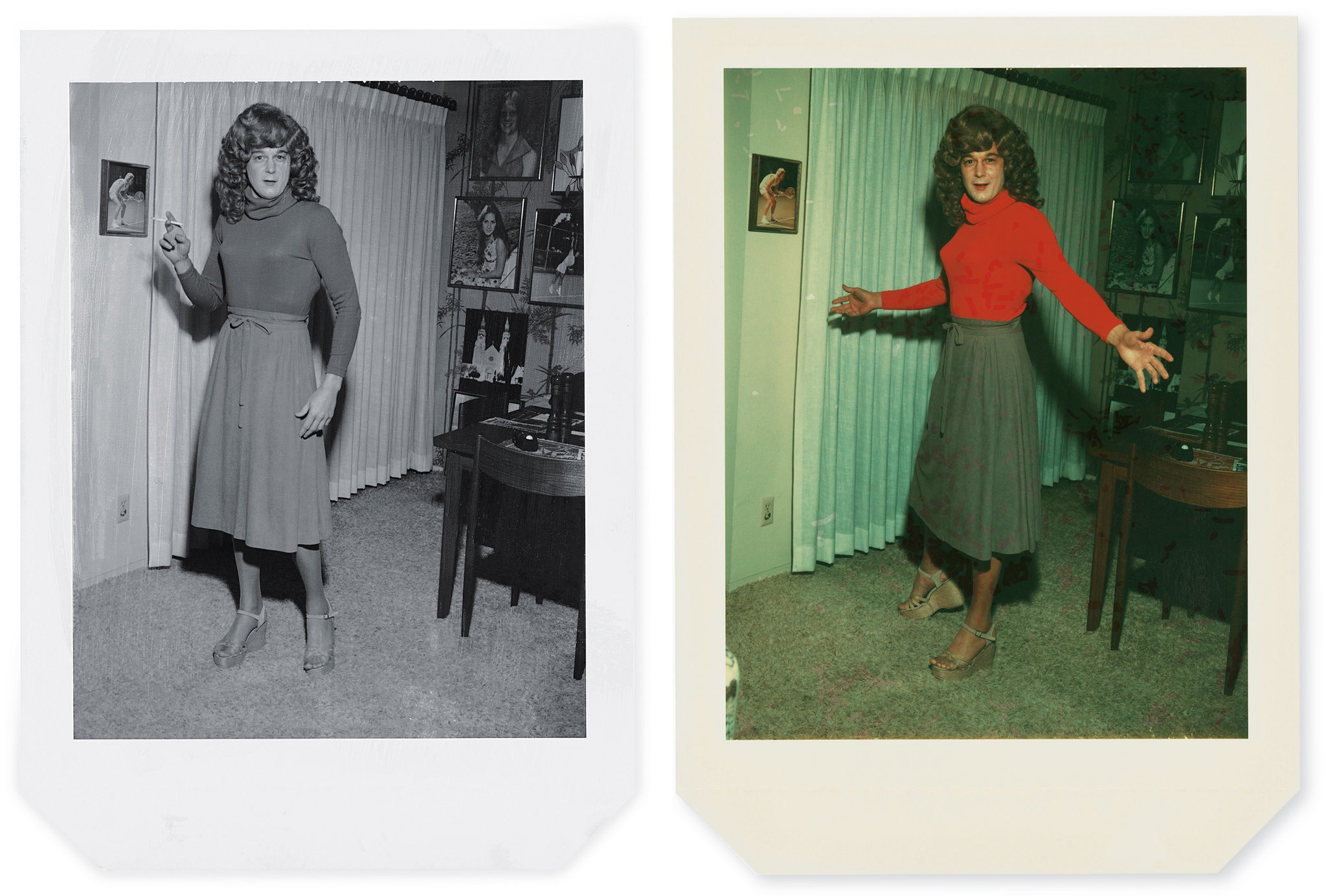
April Dawn Alison’s “Untitled,” no date.Credit…San Franciscio Museum of Modern Art, gift of Andrew Masullo, courtesy of SFMOMA and MACK
“The American People” is thus a kind of raid and kidnapping, marching into the country’s past to out its closeted celebrities and bringing them back to be traded for ransom. The only recent work visionary enough to complement and counterweight Kramer’s is “A 24-Decade History of Popular Music,” by Taylor Mac, though it is more of a pride parade than a sortie. Each hour of the marathon piece of performance art examines one decade between 1776 and 2016, reframing its popular music — from “Yankee Doodle” in the first decade to Lauryn Hill’s “Everything Is Everything” in the penultimate one — with liberating, pansexual fervor and glee. First performed as a 24-hour whole at St. Ann’s Warehouse in Brooklyn in 2016, the show is a brilliant example of low-tech, high-impact theatricality. Mac, onstage throughout and accompanied by a 24-piece orchestra that shrinks over time to nothing, serves as both shaman and chanteuse, introducing each number, singing the hell out of it and explaining its secret messages. In between songs, he changes clothes — an entire Mardi Gras of dizzying costumes has been concocted from trash by the designer known as Machine Dazzle — and goads the audience into all sorts of participatory acts. (I not only donned drag during one decade but threw Ping-Pong balls, as instructed, at a passing temperance parade.) Like a Seder, the show seems designed to exhaust or intoxicate its audience into absorbing Mac’s radical rereading of history, while also keeping everyone awake long enough to melt a crowd into a community.
But the production’s mega-camp style should not distract us from appreciating a text that is demonically clever and brilliantly researched. (Who knew there was an 18th-century hit by the Scottish poet Robert Burns titled “Nine Inch Will Please a Lady”?) What Mac is able to demonstrate in 246 songs is that queerness of all sorts — including the spirit of resistance that often arises from it — has been part of our DNA from the beginning; it’s packed into Western cultural expression. Sometimes it’s just waiting for an artist to go rummaging in the attic to find it.
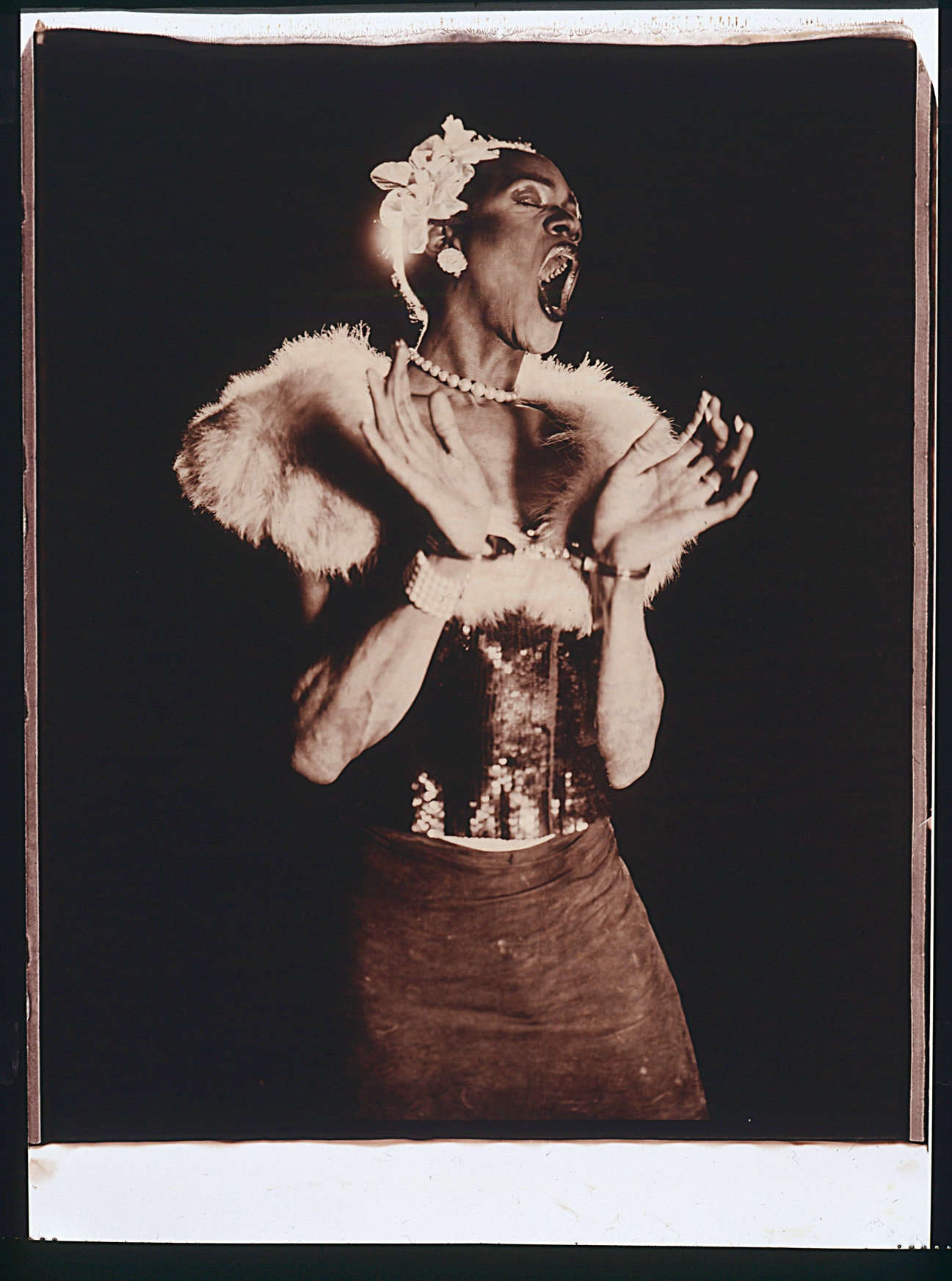
Lyle Ashton Harris’s “Billie #26” (2002).Credit…Unique polaroid, courtesy of Salon 94, New York and David Castillo Gallery, Miami
3. Conversations With the Past
Thinking about these contrasting works, I began to picture a divided highway being built by queer artists. On one side, some were updating the present with imports from the past, while across the guardrail, others were backfilling the past with exports from the present. Among the backfillers is Donja R. Love, whose plays “Sugar in Our Wounds” and “Fireflies” were both staged off Broadway last year. The two are part of a trilogy called “The Love* Plays,” the asterisk indicating queer love, erased from black history. Love works to repair that erasure in daring ways. “Sugar” explores the relationship between two enslaved men whose romance is conducted under the supportive gaze of an elder called Aunt Mama. “Fireflies,” about a couple clearly based on Martin Luther King Jr. and Coretta Scott King, goes even further, imagining the latter character not only as the author of her husband’s great speeches but also as a lesbian. “It’s not in the realm of the unbelievable that the figures ‘Fireflies’ was based on had a private life that didn’t always reflect their public life,” Love says.
It’s nice to think so, but Love, smartly, does not allow his plays to become past-life wish fulfillments. Both “Sugar” and “Fireflies” are more tragic than not. So is “In the Middle,” the upcoming conclusion to his trilogy, about a black mother whose queer son is killed by the police. The mother’s remaining family adapts what Love describes as an old African ritual of uplifting to assuage her modern grief and guilt. In that, the playwright jumps the guardrail, which turns out not to be very high. Artists cross it regularly. Love sees his plays not as one-way monologues but as “conversations with the past.”
Still, the different methods have different implications. In Jeremy O. Harris’s “Slave Play,” on Broadway now, three interracial couples attend a weeklong “antebellum sexual performance therapy” retreat. As part of the prescribed role play, the sole gay couple takes on characters that reverse the expected plantation power dynamic: Gary, who is black, dominates Dustin, who is white. But they can’t keep a straight face, as their real-life conflict keeps infecting their fantasy. The past in “Slave Play” is not there to be repaired; it is explicitly a tool for repairing the present, and (as the results of the therapy bear out) an imperfect one at that.
But an artist isn’t a repair person, and “Slave Play” is doubtful on whether the larger interracial union of America can ever be fixed as long as white people fail to acknowledge the obliterating shadow of racism we all live under. What playwrights like Love and Harris are doing in that sense is staging an intervention: not just writing blackness into history but, in a kind of double axel, blackness into gayness into history. When a culture has difficulty acknowledging even one form of marginality, two or more forms may result in total invisibility, the resistance coming from every direction. And so it’s no surprise that queer artists look backward to see how their multiple identities — you could add gender, class, disability and others to the list — first began to merge or diverge. We all want proof that people like us have existed before, and if it can’t be discovered it must be invented.
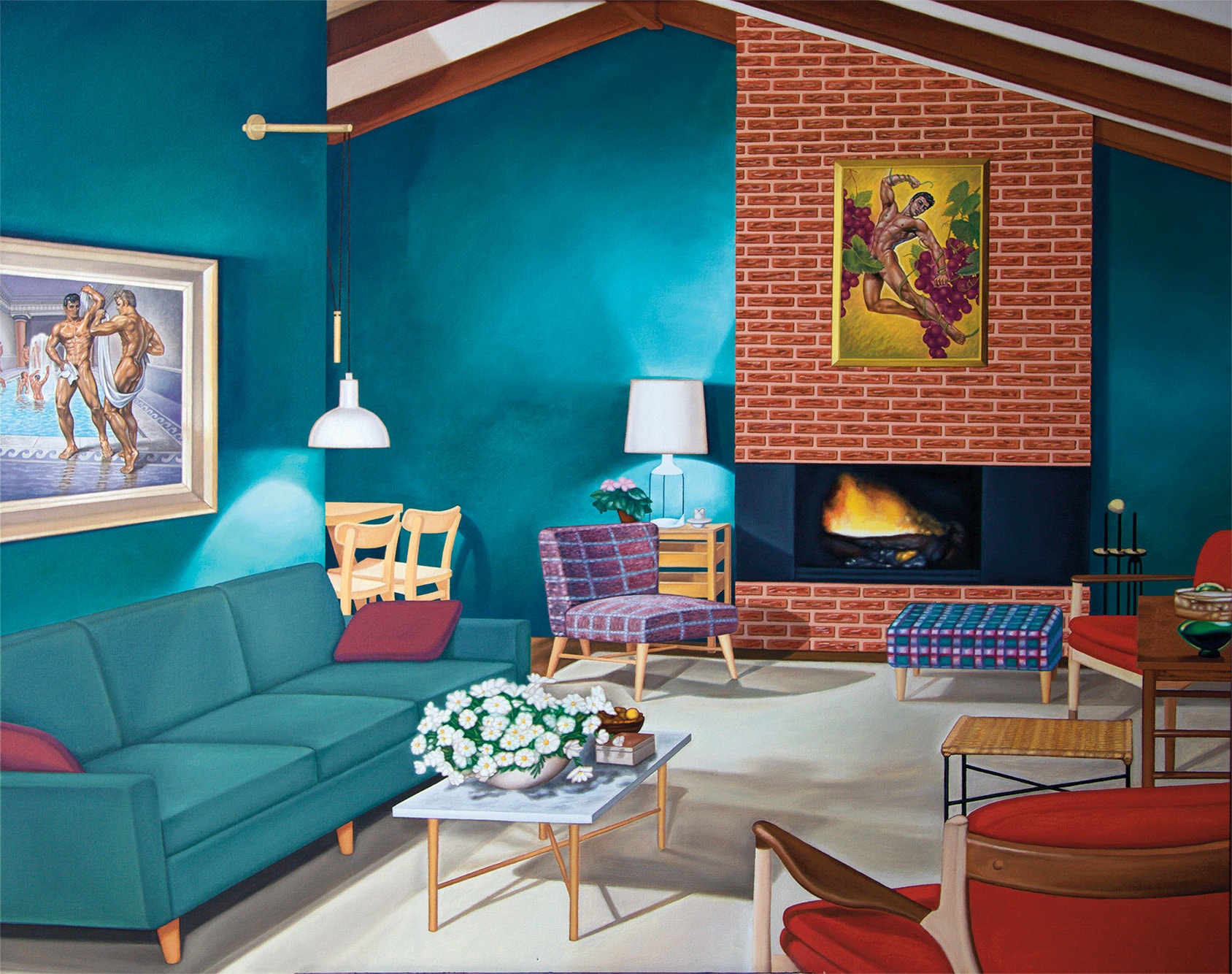
McDermott & McGough’s “Serviced Apartment, 1965” (2017), from their “Hollywood (Homosexual) Hopeful” series.Credit…Oil on canvas, courtesy of McDermott & McGough
Sometimes that means creating a personal time machine. The artist Glenn Ligon is now known primarily for his works exploring racial identity: In his 1993 “Runaways” series, he slips descriptions of himself as a missing person, solicited from friends, into re-creations of 19th-century advertisements seeking the return of escaped slaves. “RAN AWAY, Glenn, a black male, 5’8”, very short hair cut, nearly completely shaved, stocky build, 155-165 lbs.,” one of them begins. The text, set in period typography, is illustrated with a drawing of a man on the run with his bindle, suggesting at the same time an artist on the run from the past.
But Ligon, whose early work in the 1980s included appropriations of gay pornography, has also played with time as a way of commenting on more complicated questions of identity. The source material for a 2000 show called “Coloring” came from a series of workshops in Minneapolis in 1999 at which he asked children to fill in pictures of black cultural heroes found in coloring books from the 1960s and 1970s. He then reproduced their hilariously impertinent scrawls in paint and oil stick on canvas, turning Malcolm X, for instance, into a blue-lidded, fuchsia-lipped drag queen. The point is not to impute counterfactual gayness on notably heterosexual historical figures but to suggest that identity is created by context — and can just as easily be dissolved by it, too. That duality is no doubt part of what makes the past so attractive to queer artists. They can use it to swing either way.
Among photographers, naturally, the contrast is especially clear. Representing the importers is Catherine Opie, some of whose photographic portraits appropriate painterly tropes of former centuries to valorize subjects — many of them her lesbian and trans friends — who too often are marked as beyond the bounds of culture. To be honest, they are often self-marked, or at any rate marked by choice, with elaborately transgressive tattoos and piercings. In one astonishing piece, “Self-Portrait/Cutting” (1993), Opie faces away from the camera so we can see a drawing made of wounds on her back. As if fashioned by a child with a razor, two stick-figure women in triangle skirts hold hands beneath a puffy cloud while a startled house beside them bleeds. This image is placed in tension with an emerald green 18th-century-style backdrop, swagged to bursting with damask fruit that lends a gorgeousness, and an imprimatur of mainstream probity, to the otherwise discomfiting scene. Here and in so many other portraits, Opie’s demand of the past is that it serve the present and in doing so salve it.
Then there’s John Dugdale, whose photographs, many of them tinted the eerie blue of the 19th-century cyanotype process, wash away all marks of modernity. It was in the 1990s, after Dugdale lost most of his eyesight from an AIDS-related illness, that he reconfigured his technique, acquiring a large-format antique camera and experimenting with older chemical methods and older styles of portraiture. Men in nature, classically posed nudes, male couples locked in athletic embraces, even an ornately semi-draped hunk caressing a lamb: These are images that could have passed as pornography for Forster.
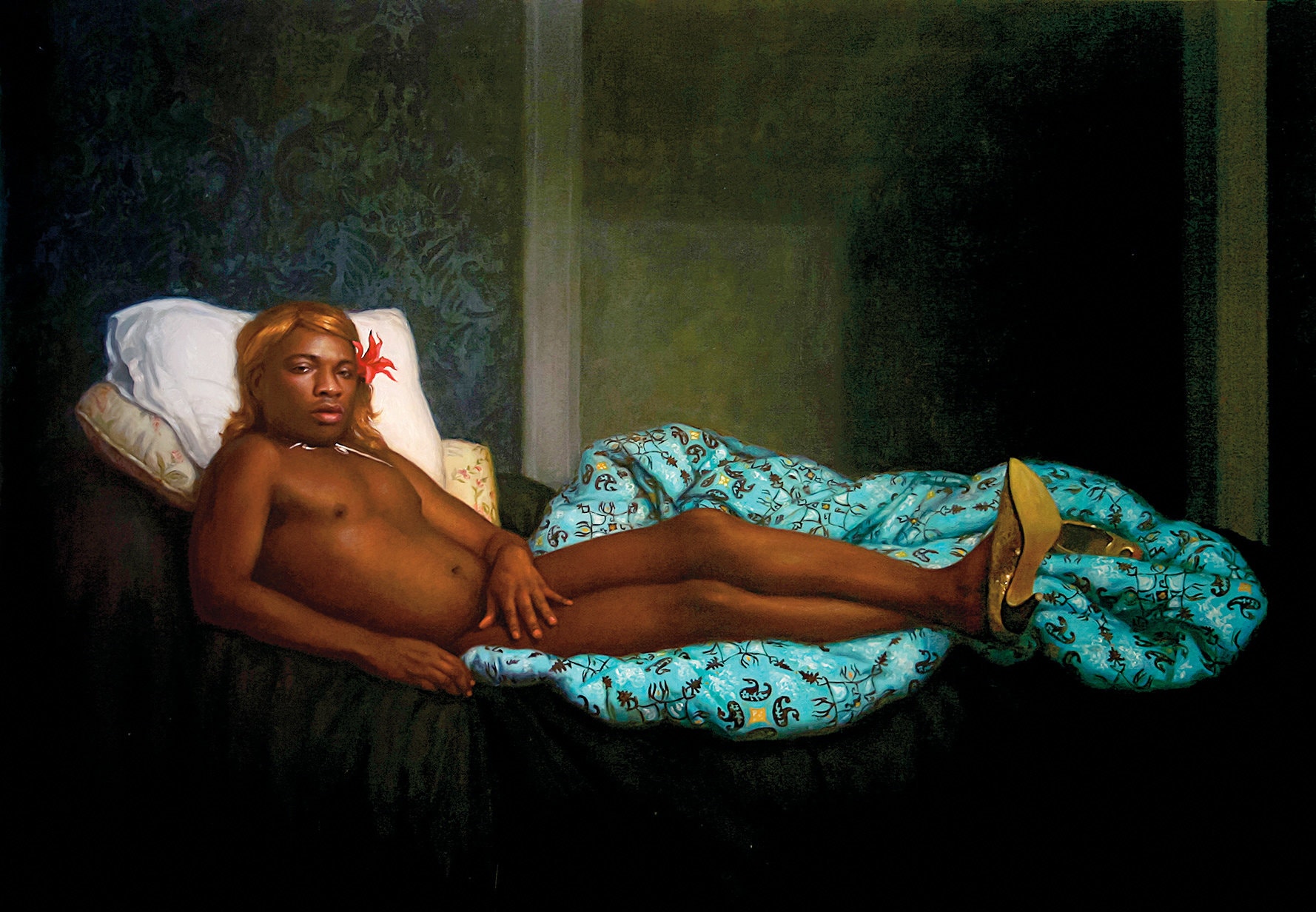
TM Davy’s “Kalup, Reclining Nude” (2008).Credit…Oil on canvas, private collection, courtesy of the artist and Van Doren Waxter, N.Y.
Probably not for us, though. Is it odd that the most stirring — O.K., hot — depictions of sex in the queer art I’ve been exploring have come not from photographs but from literary and dramatic works? (I am a theater critic, but still.) One is in the 2015 play “Indecent,” in which Paula Vogel refracts the history of an earlier work through a series of modern lenses. Her inspiration, a 1906 Yiddish melodrama by Sholem Asch called “God of Vengeance,” became notorious when it was shut down for obscenity after its English-language Broadway debut in 1923. This was not because the respectable businessman at the center of its story runs a brothel in the basement of his proper Jewish home. It was because his virginal daughter falls in love with one of his prostitutes and, in the play’s most beautiful scene, kisses her passionately in the rain.
Though the scene was apparently cut from the 1923 production, we see it repeatedly, from different angles, in the director Rebecca Taichman’s staging of “Indecent”; from none is it merely pretty or chaste. (The women’s nightgowns get drenched.) In its heat no less than its beauty, it remains one of the most surprising images of eros I’ve seen onstage. The surprise isn’t just that we have accessed it, like a radio signal from the past, but that a male, presumably heterosexual playwright in 1906 had the daring to write it down. And how could he have preserved such a moment if it didn’t exist? Vogel’s text insists that it did, even hinting that the past’s version of queerness, before the arrival of identity politics, was not perhaps an entirely bad thing. If we are now freer to express our experience, we are no longer free from having to categorize it — and in categorizing, to limit its meaning. Only in a society that had no name for them could these women be so unbound.
And yet, outside of “Maurice,” such plots rarely end happily. (“Indecent” is framed as a Holocaust story; Hall’s “The Well of Loneliness” concludes with its lesbian protagonist praying piteously for “the right to our existence.”) In “Portrait of a Lady on Fire,” which won the Best Screenplay Award at the Cannes Film Festival in May, a young woman in Brittany in the late 18th century falls in love with the woman painting her portrait. This is dazzlingly done, and a major addition to our undocumented history, but only enhances its inevitable sadness, as the purpose of the portrait is to confirm the girl’s marriageability to an Italian man she’s never met and doesn’t want to. We last see her crying for what seems like an eternity.

Catherine Opie’s “Rocco” (2012), from her “Portraits and Landscapes” series.Credit…Pigment print © Catherine Opie, courtesy of Regen Projects, Los Angeles and Lehmann Maupin, New York, Hong Kong and Seoul

Martine Gutierrez’s “Neo-Indeo, Legendary Cakchiquel, p20 From Indigenous Woman” (2018).Credit…C-print mounted on Sintra, edition of eight © Martine Gutierrez, image courtesy of the artist and Ryan Lee Gallery, New York
4. The World As It Might Have Been
The title of Peter McGough’s memoir, published this fall, is “I’ve Seen the Future and I’m Not Going.” That pretty much sums up the philosophy under which he and David McDermott, his longtime collaborator and former partner, have made art since 1980 under the moniker McDermott & McGough. They not only turned their lives into a performance piece based in the past — wearing detachable starched collars and high-button shoes too fey even for a visit to Howards End — but also made their artwork an expression of their born-in-the-wrong-century lives. Among their most famous pieces is a yellow canvas covered with a thesaurus of quaint (and not-so-quaint) epithets for gay men, decoratively arranged in varying old-timey typefaces like a jaunty printer’s sample. It’s called “A Friend of Dorothy, 1947,” though it was made 40 years later; they often sign their work with a long-bygone date to “save it from obscurity” — obscurity being the present.
In that pursuit, the art, it seems, has been more successful than the life; McGough, who almost died of complications of AIDS after he refused modern medicine, now calls their dream of living as Edwardian gentlemen in 1980s Manhattan “a failed utopia.” Perhaps that’s inevitable when you see your world as a “time death trap,” as McDermott once put it, and seek to escape it with reproductions of antique wallpaper and a hand pump in lieu of running water. Yet there’s a contradiction: The work the men consider their masterpiece — and when I saw it, I thought so, too — is “The Oscar Wilde Temple,” versions of which appeared in New York in 2017 at a Greenwich Village church and in London at Studio Voltaire a year later. “It is probably our greatest work,” McGough says, “because it’s not about us.” A religious environment in which the religion is queerness, complete with stations of Wilde’s cross and portraits of other gay martyrs, it did what religious art so often and so confusingly does: glorifies a past that produced such a figure but also desecrated him.
In a similar way, “The Inheritance” is a Forster temple. It’s only the play’s nightmare narcissist character who denies him, by denying “Howards End”: “I can’t identify with it at all.” This is the myopic plaint of the time refugee, unable to credit the past because he isn’t in it. What the most powerful works of queer historical imagination seem to be doing instead is positing a vision of the world as it might have been had gayness been a more central if not yet accepted part of it. And by doing so, stoutly acknowledging that, in reality, things are neither better nor worse but both.
Which is not to criticize those works that, almost by default, suggest unimpeded progress; if we are able to enjoy the sad narrative of “Fireflies” in the theater or sigh over “The Scapegoat, 1863,” a 1986 McDermott & McGough painting depicting a sacrificial male nude on a sofa, we are already better off than their subjects. They are visible to us as they could not be to themselves. Instead, I want to suggest that we look at such art as a warning against defeatism and the appropriation of pathos. One model for that would be “The Colored Museum,” the playwright and director George C. Wolfe’s satire of black cultural representation; his “exhibits” — a series of vaudeville-like sketches of black life and clichés, with titles like “The Last Mama-on-the-Couch Play” — ripped holes in older portraits that have never quite healed. As the critic Frank Rich put it in his New York Times review of the 1986 Public Theater premiere, Wolfe was asking how black men and women could “at once honor and escape the legacy of suffering that is the baggage of their past.”
Implicit in the two halves of “honor and escape” is a prohibition against mawkish brooding and artless earnestness; and I’d add that looking to the past to justify a sense of personal grievance may not be warranted for today’s queer artists either. That vein is tapped out, at least for those white gay cisgender men who have emerged from the disasters of the closet and AIDS into lives of great privilege. With our husbands and children legally attached — I’m lucky enough to have both — perhaps a different approach is in order. While watching transgender and other marginalized artists rise and face their own historical reckoning, I’m concerned less about my own past than their future, and how we will lend ourselves to it.
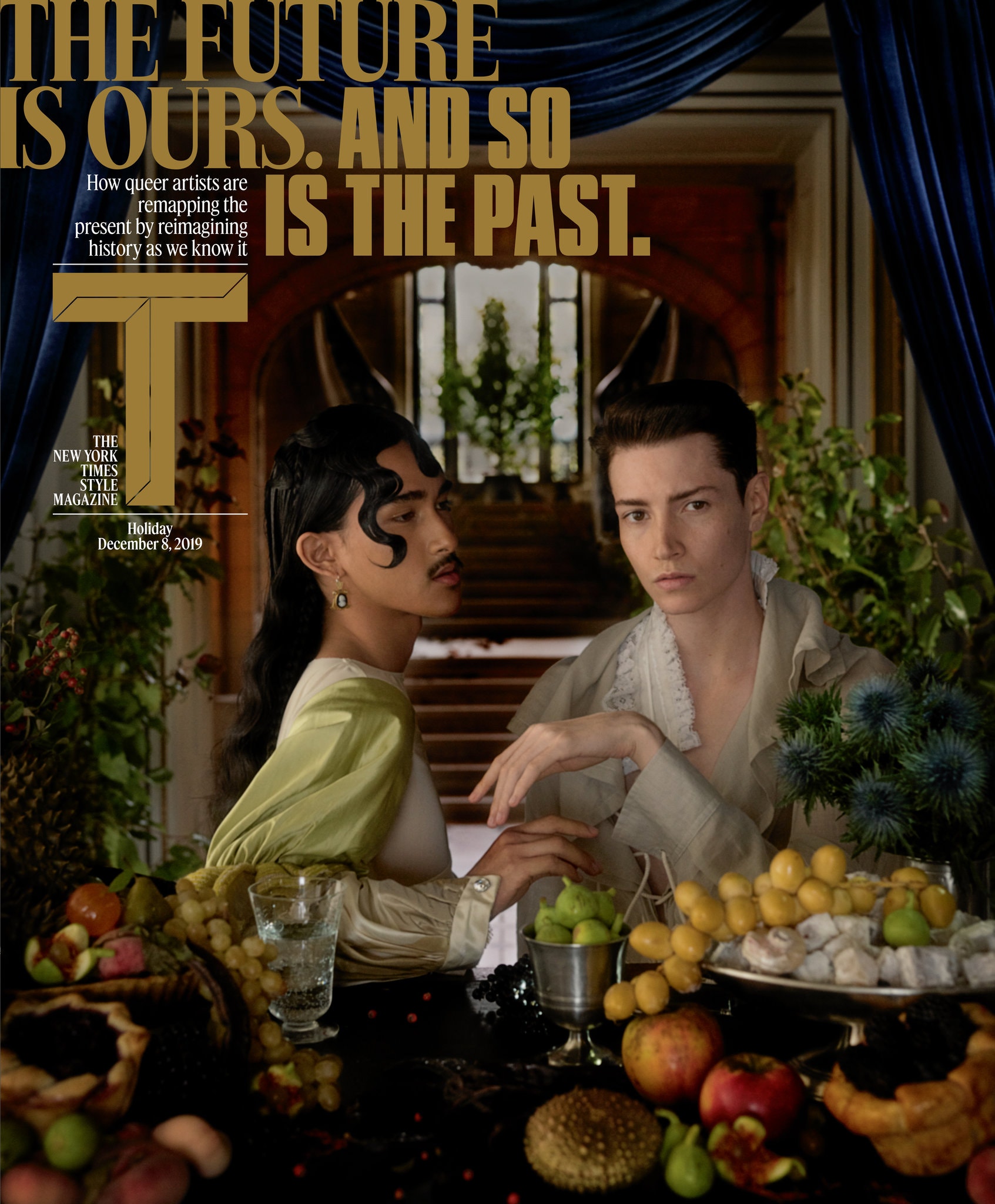
The cover of T’s Dec. 8 Holiday issue. Left: Lou Dallas dress, $315, and sleeve, $290, loudallas.com. Vintage earrings, $3,000, Broken English, (212) 219-1264. Right: Ann Demeulemeester shirt, price on request, anndemeulemeester.com. Stylist’s own collar. Shot at Blairsden house in New Jersey.Credit…Photo by James Hawkinson. Styled by Jay Massacret
This doesn’t mean there is no joy to be had in more traditional queer art; indeed, joy is the best thing left in it. And joy is what I feel reading Sarah Waters’s novels, starting with “Tipping the Velvet” in 1998. Most of them take place in the lesbian past; “tipping the velvet” was slang for cunnilingus in Victorian England. They involve clever women learning to create themselves without obvious models in hostile environments, yet they never feel maudlin; rather, in their urbanity, as well as in their momentum and subversion of genre, they read as if written by Dickens after a year spent majoring in gender studies at Vassar. They recreate real worlds erased by time (“Tipping the Velvet” begins in a theatrical demimonde featuring celebrated male impersonators) but also revel in the deliciousness of imagining them as fantasy. What would a pub for lesbians, like the one that features in that novel, have felt like if it existed back then? Somehow Waters makes the Boy in the Boat, as her pub is called, seem more real — with its treacherous staircase, sand on the floorboards, “trousered toms” at the billiard table and “square-chinned” Mrs. Swindles behind the bar — than it ever could if not invented.
Creating lives that ought to have existed is basically the novelist’s brief, whatever the specific subject or genre. But the pressure exerted by contemporary politics to make queer lives visible sometimes interferes with art-making, which at its best observes no external agendas. Waters has avoided that problem, not by retreating from the present but by locating the thing in the past she loves and making it live again. “I’m fascinated by how quickly social and cultural landscapes change,” she says, “by how behaviors that at one point seem appropriate and acceptable — or wildly inappropriate and unacceptable — can, within a few years, have been turned on their heads.” She looks to history precisely to see that it is not our story: “because then we realize that if the past can change, so can the present.”
Perhaps that’s why “Tipping the Velvet” insists on the happy ending denied to the heroine of “The Well of Loneliness.” So in its way does “The Sparsholt Affair,” a strange and beautiful novel by Alan Hollinghurst, published in 2017. Like most of Hollinghurst’s three decades of fiction, “The Sparsholt Affair” is obsessed with history. (“Contemporary life doesn’t have the things I find most interesting,” he told a reporter in 2018. “Secrecy, concealment, danger.”) What begins in 1940 as a story of a closeted hunk at Oxford, and erupts 26 years later as a gay version of the 1960s British sex-and-politics Profumo scandal, eventually skitters through five more decades. During that time, the disgraced man’s son, Johnny, learns to live the life his father couldn’t, marrying a man and becoming a father himself. When we leave him in the 2010s, he is learning to adapt to yet another new age, this one featuring gayness triumphant in the form of dancing, designer drugs and Grindr.
If ecstatic at times, Hollinghurst’s characters are not especially heroic, but it’s still instructive to see how easily they change or are overridden by time. It’s no accident that Johnny starts out professionally as an art restorer and ends up a successful painter: His minute study and improvement of old canvases lays the groundwork for a future his father dared not dream. By chronicling both men’s lives in patient prose, Hollinghurst stitches Forster’s wound — and not just Forster’s. Repairing a narrow corner of the past, he and the other artists I’ve been thinking about are repairing us. They are taking gay history out of the drawer where it has lain untouched, awaiting usefulness. They are answering the question of “Maurice” affirmatively: It is publishable. It is worth it.
Models in the first photo: Krow Kian at Heroes Model Management, Jeffrey Prada at Nöni, Otto Zinsou at the Claw Models and Carmen Amare at Muse Management. Models on the cover: Prada and Kian. Hair by Tomi Kono at Julian Watson Agency using R&Co. Grooming by Frankie Boyd at Streeters. Set design by Randall Peacock. Food styling by Young Gun Lee. Casting by Noah Shelley at Streeters. Production by Hen’s Tooth. Manicure: Yuko Tsuchihashi using Chanel Le Vernis. Floral arrangements and greens: Lauren Messelian. Lighting design: David Diesing. Digital tech: Travis Drennen. Photo assistants: Will Englehardt, Kevin Vast, Jason Acton and Alex Cohen. Hair assistants: Chika Nishiyama and Mayumi Maeda. Grooming assistant: Jeff Santiago. Set assistants: Todd Knopke, Peter Davis and Genevieve Ward. Food stylist’s assistant: Mariko Makino. Tailor: Curie Choi. Stylist’s assistant: Sho Tatsuishi.
by Jesse Green
Source – The New York Times







